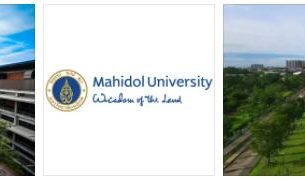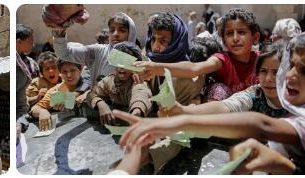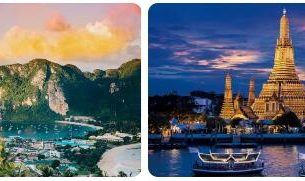The United Arab Emirates are a federation of the seven sheikdoms Abu Dhabi, Dubai, Sharjah, Ras al-Khaima, Fujaira, Umm al-Kaiwain and Ajman. The individual emirates are autonomous sheikdoms.
The highest body of the United Emirates is the Supreme Council, to which the seven rulers of the Emirates belong. The ruler of Abu Dhabi, the largest of the emirates, has also been the head of state of the federation since the founding of the United Arab Emirates in 1972. The Emirates border the Persian Gulf to the north and the Gulf of Oman to the east.
The United Arab Emirates, which have been producing large amounts of oil since the 1960s, have the highest per capita income in the world thanks to black gold. In addition to the native Arabs, around 80% foreigners live in the Emirates as guest workers.
More than 90% of the population professes Islam, which is also the state religion. Geographically, the area of the United Arab Emirates is one of the driest on earth. Two thirds of the country is occupied by the Rub al-Khali desert. The capitals of the individual emirates are all on the coast to the Gulf. Only individual oases make the desert in the interior of the country habitable.
Interesting
In mid-March 2009, a state fund from Abu Dhabi took over 9.1% of the German car company Mercedes-Benz for approx. 2 billion euros.
| Name of the country | United Arab Emirates (UAE) |
| Form of government | State consisting of 7 emirates, patriarchal presidential system |
| Geographical location | on the south coast of the Persian Gulf |
| National anthem | Emirati Tahiat Alalam (…..) |
| Population | around 7.3 million (other sources give 9.3 million) of these, well over 80% are foreigners (Credit: Countryaah: United Arab Emirates Population) |
| Ethnicities | Arabs and well over 80% foreigners |
| Religions | Islam is the state religion |
| Languages | Arabic and English as a business language |
| Capital | Abu Dhabi |
| Surface | 83,600 km² – without the offshore islands 77,700 km² |
| Highest mountain | In the north of the United Arab Emirates, the Hajar Mountains rise to a height of around 2,000 m |
| International license plate | UAE |
| Currency | Dirham = 100 fils |
| Time difference to CET | + 3 h |
| International phone code | + 971 |
| Mains voltage, frequency | 220 – 250 volts, 50 hertz |
| Internet TLD (Top Level Domain) | .ae |
United Arab Emirates: history
Before the year 1000
The oldest finds of human civilization in the area of the United Arab Emirates date back to the 5th millennium BC. BC.
According to Abbreviationfinder website, a civilization of the early history of the kingdom of Magan, had his home in the northern part of the Hajar Mountains on the Arabian peninsula. The empire existed from around 3,200 BC. The exact time of the end of this copper processing culture is uncertain.
As early as 2,500 years BC There were extensive trade relations between the Umm al-Nar culture and India beyond the Arabian Peninsula.
Continuous settlement of the Arabian Peninsula can only be assumed in the Al-Ain oases. For a long time, the area was populated exclusively by nomads and Bedouin tribes, who fought among themselves for oases and access to fresh water.
Only with the Islamization of the area of the Arabian Peninsula did an Arab world empire develop in the 8th century, which made up about a quarter of the world known at that time. Islam united the previously rival tribes in the common goal of spreading Islam.
From the year 1000 to the 17th century
In the 15th century, the Portuguese took control of the maritime trade in the Indian Ocean and also established branches on the coast of the Arabian Peninsula. In the 17th century the Dutch, French and British wrestled the Portuguese from dominance in the Indian Ocean.
From 1622 the British, represented by the fleet of the East India Company, were present in the Indian Ocean and on the coast of today’s United Arab Emirates and were finally able to drive the Portuguese out. The British increased their power in the region until the 19th century
In the 18th and 19th centuries
From the middle of the 19th century, Great Britain took over the foreign policy and defense of the individual shaikdoms of the Arabian Peninsula. These Shaikhtumers were formed from settled Bedouin tribes whose head of the family was called Shaikh (old, wise man).
The coastal residents of the region had for a long time defended themselves strongly against the conquest of the Europeans, which earned the area the name Pirate Coast. The first peace treaty between the British East India Company and the belligerent tribe of the Al Qasimi took place in 1820 and was intended to secure peace at sea. In 1835 the Shaikhs of Abu Dhabi, Dubai and Ajman joined the treaty. However, the ceasefire was repeatedly interrupted until 1853 and the peace could only be secured with a new treaty. From then on the coast was called the Trucial Coast (Armistice Coast). In a new contract in 1892, the British obliged Bahrain and the Shaikhtuemers of the coast not to allow any companies or foreign agencies except the British to set up in the Shaikhtumers.
In the 20th century
At the request of the British, the Shaikhtuemers founded a council in 1952, the so-called Trucial State Council, in which the rulers of the individual Shaikhtuemers met and discussed.
Enormous oil deposits were found in the region at the end of the 1950s. Abu Dhabi has exported very large quantities of oil since 1962 and Dubai since 1969.
In 1968 Britain announced its departure from the region for 1971. In 1971 the United Arab Emirates, consisting of the Shaikhtümern Abu Dhabi, Dubai, Sharjah, Ajman, Umm al-Quwain and Fujaira, were founded. In 1972 Ras al-Khaimah became the seventh state to join the United Arab Emirates. In 1981, the United Arab Emirates founded the Gulf Cooperation Council with Saudi Arabia, Qatar, Bahrain, Kuwait and Oman.



